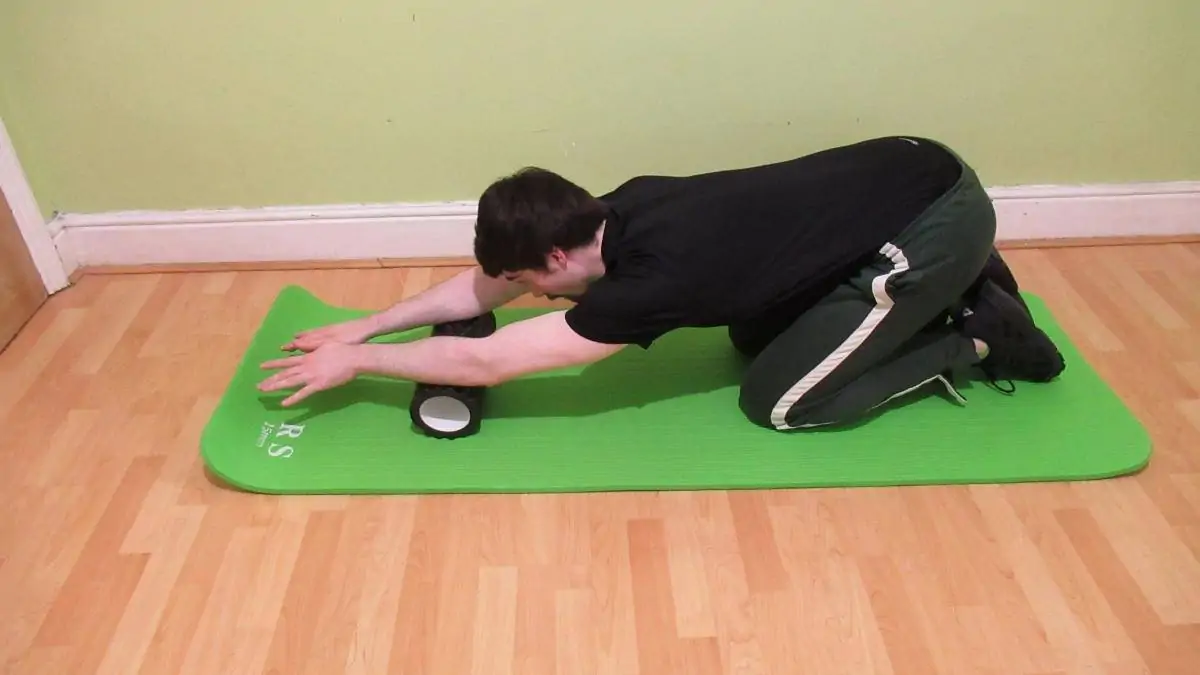The forearm can often knot up when we spend extended time on the computer and on other electronic devices. Yet, our lower arms can also feel uncomfortable due to excessive weight training, sports, and general overuse.
This article covers the most effective myofascial release forearm drills for reducing discomfort. While there’s no guaranteed exercise that will cure everyone’s problems, these movements have proven successful with many people all over the globe.
I’ll also show you precisely how to find the various forearm trigger points, as well as how to relieve any built-up tension in your lower arm.
Of course, we always recommend consulting with your doctor and physical therapist before doing these exercises. By examining you, they’ll hopefully be able to work out an individual protocol that can help with your specific issues.
Related posts: how to treat forearm splints │forearm pain from weight lifting
Myofascial release forearm drills
For these drills, you’ll need either a lacrosse ball or a high-density foam roller. Avoid using a regular foam roller if you can because they don’t offer enough tension for a small area like the forearms.
Flexor lacrosse ball roll
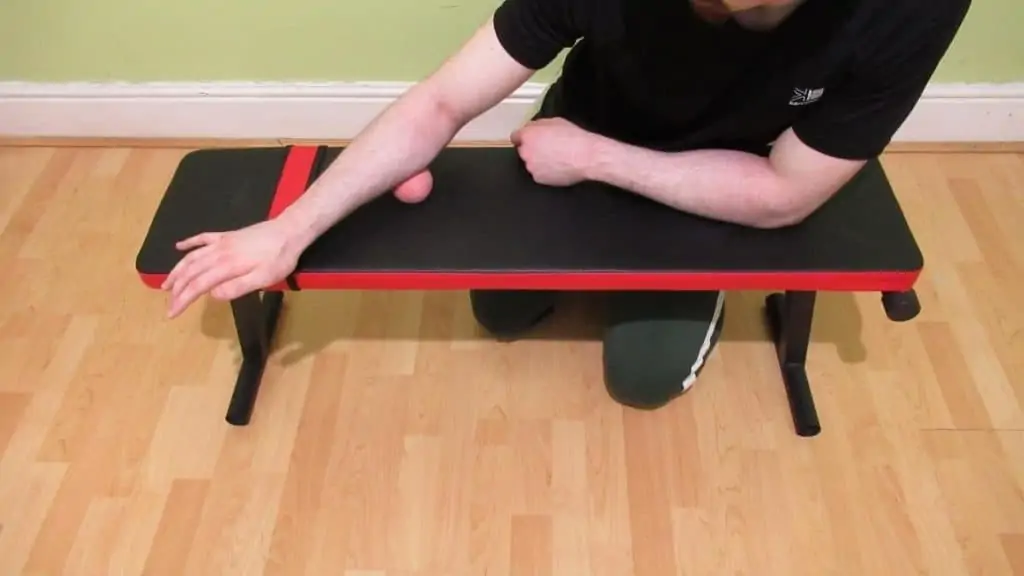
If the underside of your forearm feels tight, this simple lacrosse ball roll is a great drill to relieve some of that built-up tension. All you need is a flat surface, like a weight bench or a desk, and a spare few minutes.
Begin by placing the lacrosse ball on a flat surface and then rest the underside of your forearm on top of the ball. Exert enough force onto the ball so that you can feel your lower arm loosening up, but avoid digging the ball deep into your muscle tissue because there are a lot of sensitive structures in your forearm, like small bones and veins.
Place the ball at your wrist and move it around the same area in circular motions. After a few circles, move the ball up your forearm, eventually ending these circular motions at the elbow.
When you find a spot that’s particularly tight, stop there for a while and apply a small amount of extra pressure to really loosen up that tension.
Apply less pressure the closer you are to your wrist. This is because there’s less muscle in this area to protect those sensitive structures that I just mentioned.
You can also try an initial forearm stretch to see where you feel the tightness, the location of which is also known as a trigger point.
Extensor lacrosse ball release

If you have pain in your wrist and forearm from typing, then this straightforward, tension-releasing drill might be able to reduce your discomfort. Since the extensors are smaller and weaker than the flexors, they’re usually the first to experience forearm cramps from overuse.
Thankfully, you can easily do this drill while you’re at work by using a desk, performing it at home on your table, or at the gym on a weight bench.
Supinate your forearm so that your palm is now facing up. Then, place the top of your forearm on the lacrosse ball and apply some pressure until you can feel the device pressing slightly into your muscles.
From there, repeat the same process as before. Make small circular motions with the ball a few times in the same forearm region before moving up the lower arm towards your elbow.
You can also perform this drill by placing your forearm in a pronated position and then using your other arm to hold the ball and apply the tension. This technique affords you slightly more precision in how much tension you apply, but in all honestly, the differences are barely noticeable.
Moreover, if you’re using your other arm to exert the tension, then it will naturally get tight itself and require more forearm fascia release. [1]
The latter protocol also isn’t ideal if you have pain on top of your forearm when gripping because gripping the ball requires a fair amount of exertion, which could worsen any existing forearm issues that you may have.
Brachioradialis forearm roll release
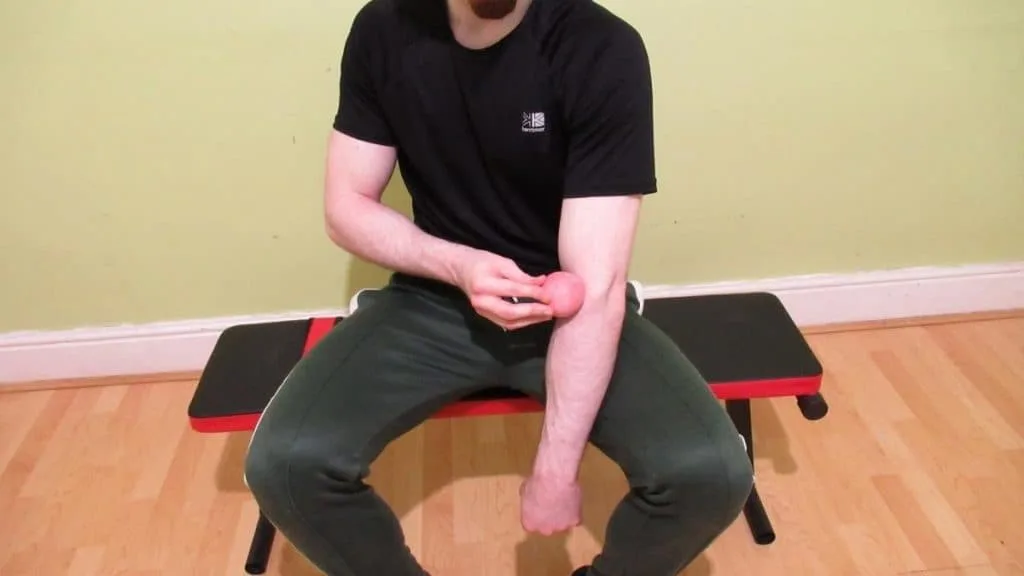
If you have pain in your brachioradialis, which can often occur when your elbows are in flexed positions for long periods of time (i.e., during office work), then this drill can help to relieve that built up tension and discomfort.
Now, foam rolling forearm muscles can be tricky because it’s often hard to get enough tension. Also, getting your body in the right position to exert enough force can be uncomfortable.
So again, I recommend using a lacrosse ball or a tai chi ball. This time, however, we’ll be using our other hand to apply the pressure because the brachioradialis is a large forearm muscle that can handle more tension than some of the smaller extensors.
The bulk of this muscle is located on the top of your forearm on the outside of your elbow. However, like many of the lower arm muscles, it inserts much further down. So in order to find your forearm trigger points, that’s where we’re going to begin.
Hold the ball in one hand and then gently roll it around the lower part of your forearm. Then begin to move the ball up to the fleshier part of the brachioradialis and apply more tension there.
This muscular part is where many people experience the most tension because, due to its size, it’s the most commonly used part of the muscle during lifting and while performing everyday tasks.
Read more: forearm muscle pain while doing pull ups
Forearm trigger points

Trigger point forearm muscles vary from person to person. The best way to find and highlight them is by using a lacrosse ball or foam rolling forearm muscles that you believe are the source of your discomfort.
A typical trigger point for those performing computer work lies at the common extensor tendon that’s located on the top of your forearm on the outside of your elbow. Gently roll the lacrosse ball around this area to work that soft tissue.
You can also do a forearm roll without any equipment by simply using the fingers of your opposite hand to locate the exact trigger point and then work the tension out.
Performing forearm myofascial release is an affordable and low-risk method for attempting to reduce or eliminate discomfort. It’s one of the best forearm rehabilitation drills, too, in this regard.
Of course, you may have a more serious condition like carpal tunnel syndrome or lateral epicondylitis (tennis elbow), but you may also just have a muscle strain in your forearm or excessive built up tension from typing, which is a very common issue among today’s working population.
Is forearm myofascial release worth it?
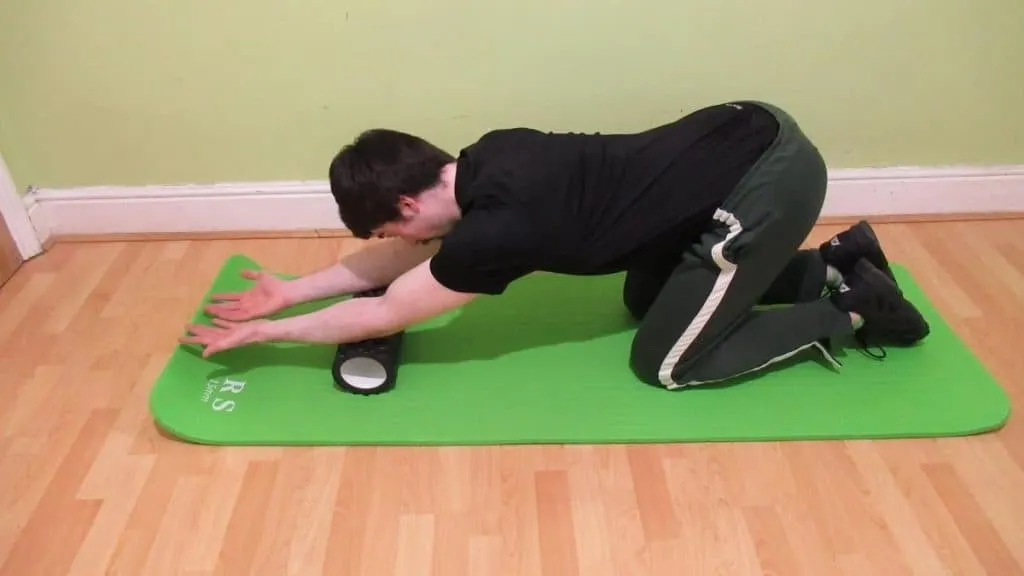
Medical treatment for forearm and elbow injuries can often be complicated and expensive. [2] As a result, some doctors will often recommend forearm roll drills to see if these exercises will ease or eradicate your symptoms.
If you have fibromyalgia and forearm pain, then these drills could help you to manage the day-to-day discomfort.
The best thing to do is to talk to your doctor so that they can decide on the most effective course of treatment for your condition.
Are there any benefits of forearm self massage?
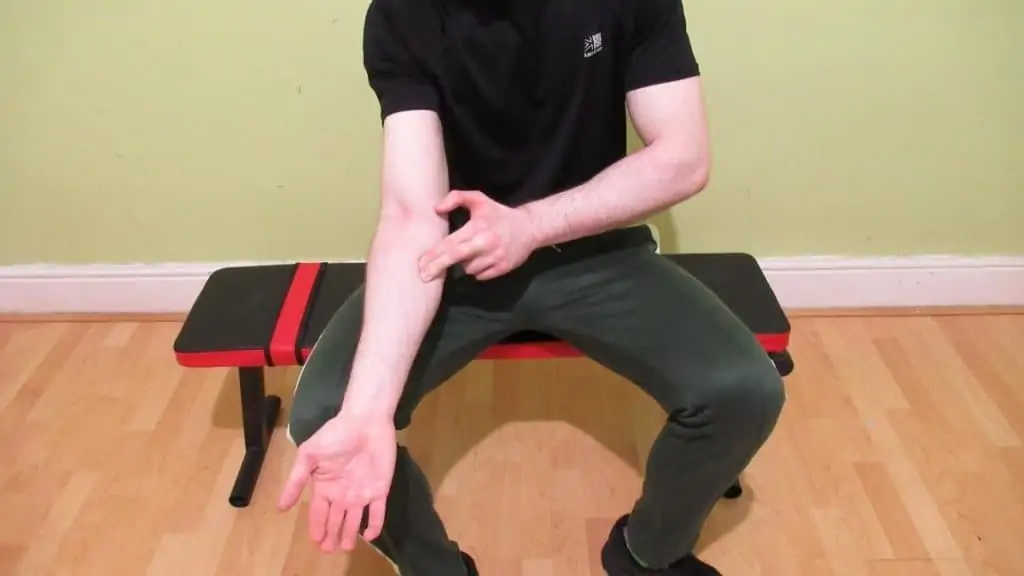
Performing forearm self massage is useful because you can perform it anywhere without any equipment. However, oftentimes, by applying the pressure with your other arm, that limb can then become needlessly tight.
This may not be the case for everyone, and I certainly prefer using a lacrosse ball to really dig into those trigger points. But there’s no reason why you can’t try. After all, devices like foam rollers are simply convenient ways to apply tension. Your fingers might be able to apply sufficient tension as well.
Read more: forearm hurts when curling │forearms hurts while gaming
A summary of the forearm myofascial release techniques
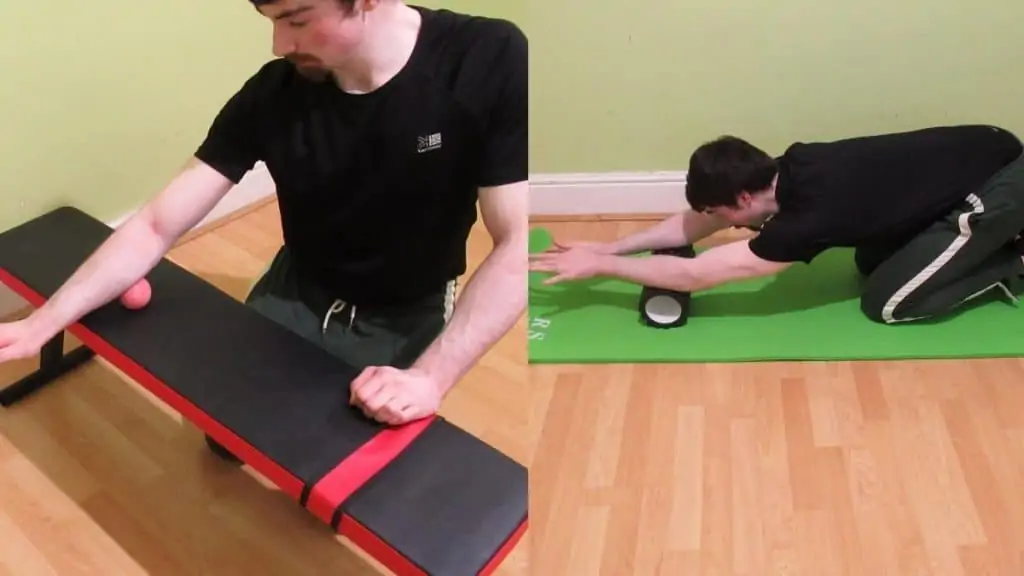
In our modern lives, certain forearm trigger points such as the common extensor tendon can often flare up when we spend too much time typing or using our personal technological devices without taking adequate breaks.
Performing Rest, Ice, Compression, and Elevation (RICE) is often recommended to treat similar injuries. And once you’ve done this, then you may wish to perform myofascial release forearm drills to work out some of the built up tension. [3]
A lacrosse ball is a small investment that can make a big difference to your quality of life by reducing uncomfortable lower arm tension. It’s also easier to get significant pressure from a lacrosse ball than from a regular foam roller because it’s of a much higher density.
I hope that these forearm myofascial release techniques help. As you can see, simple drills are often the most effective. Just be sure to start by applying a small amount of tension and then increase it slightly as you find those trigger points.
References
- Karalezli, N. ı., Kütahya, H., Güleç, A., Toker, S., Karabörk, H., & Ogun, T. C. (2013). Transverse Carpal Ligament and Forearm Fascia Release for the Treatment of Carpal Tunnel Syndrome Change the Entrance Angle of Flexor Tendons to the A1 Pulley: The Relationship between Carpal Tunnel Surgery and Trigger Finger Occurence. The Scientific World Journal, 2013, 1–4. https://doi.org/10.1155/2013/630617
- Miller, E. A., Cobb, A. L., & Cobb, T. K. (2016). Endoscopic Fascia Release for Forearm Chronic Exertional Compartment Syndrome: Case Report and Surgical Technique. HAND, 12(5), NP58–NP61. https://doi.org/10.1177/1558944716669799
- Molouki, A., Hosseini, S. M., Rustaee, M., & Tabatabaee, S. M. (2016). The Immediate Effects of Manual Massage of Forearm on Power-Grip Strength and Endurance in Healthy Young Men. Journal of Chiropractic Medicine, 15(2), 112–120. https://doi.org/10.1016/j.jcm.2016.02.013

